Car Sales
Buying a New Car with a Colour In Mind
We’re all different in many ways, and each of us has a list of favourite colours we draw upon in preference to others. That’s why when we redecorate our house, we’ll often choose the colours that suit our own tastes, or we’ll opt for a set of colours we like to dress ourselves in when it comes to buying and wearing clothes. While a car’s colour doesn’t actually affect its performance (“red cars go faster!”) or its handling, colour can certainly have a psychological effect on the car-buyer and the beholder.

Colours in the Rainbow
A car’s colour can also affect safety out on the road, and it might even affect the price of the car – in the case of second-hand vehicles, especially. And if you’re buying a new car, you often get a choice of colour, so it pays to be informed on car colour and why some colours are more popular than others!
Ready to buy a car? Research has shown that opting for a neutral colour like white, black, grey, and silver are your safest bets if you intend to sell the car to someone else later. In addition to the rising popularity of grey and silvery tones, other colours from greens to blues, reds and even violet colours currently seem to hit a chord with new car buyers.
However, if you want to expand your car colour palette, you may also appreciate learning that egg-yolk yellows, bright yellows, brown, bright orange, or even a vibrant purple colour for your new car could put you at a disadvantage when it comes time to selling or trading in for another vehicle. Naturally, these colours will appeal to a small niche of car buyers buying second-hand. Strike one of these limited buyers and I guess you could say it could also work in your favour. That said, younger drivers are making a move toward bright neon colours and bolder primary colours.
Some cars do look amazing, even quite spectacular in certain colours. Nevertheless, here is the list of car colours you should get the lowdown on, which will offer a heads-up before handing any money over and some handy hints and advice.

White: Here is the most popular car colour on the road. White is in the easy-to-care-for group and tends to look newer for longer, but white also tends to show mud and splashes easier than grey or silver. White is the safest colour for driving, thus making it one of the most common car colours we see out on the road. As our roads tend to be black or dark-grey, a white car stands out more readily and can be seen more easily by other road users. White cars are better noticed even during poor light conditions (e.g., during dusk or dawn). Still, because white is such a common car colour, white cars can be seen as a little bit bland and boring.

Black: A sleek black is always popular and looks amazing on almost any car. It is a prestige colour, being the colour of business suits and briefcases. Black is also a dark, sleek, and mysterious colour – think sunglasses, a black leather jacket, and boots. From an image perspective, black is sexy and savvy, and it is seen as being suave, a colour appealing to both the masculine and feminine. Black also makes a great canvas for a company logo.
From a safety perspective, black isn’t a terrific colour to be driving in because black cars are harder to see in conditions of poor light. Black also looks best when it’s fresh out of the car wash. Just give it a few minutes on a windy day and it will likely be covered with pollen, dirt, and dust all over again.

Silver and Grey: According to various studies, grey and silvery coloured cars are the easiest to clean, and they remain looking cleaner for longer. Dirt and dust can hide a little easier on grey surfaces, so your grey/silver car can look cleaner for longer. Silver looks a little brighter and shinier than your standard grey tones, adding a bit more class and elegance to the look in much the same way black can do. Silver, like black, might be worth considering then if you happen to regularly attend executive boardroom meets in the business world.

Red: Red is quite a popular car colour once you steer clear of the top three. Psychologists tell us that red is stimulating and alerting. Red cars are also cheerful and friendly, attracting the kids. Red is a flashy car colour and tends to hide mud easier than some of the other more vibrant colours. Nonetheless, red does become dull when dirty. Red colours are also more vulnerable to sunlight fade, requiring the need to head to the paint shop for a spruce up much sooner than many other colour types.

Blue: Blue is a colour on the rise and with the latest paint technology you can get all sport sorts of different shades from ocean blue to summer blue skies. Blue car colours are often associated with the environment and sustainability. There are many bright and bold blues that are quite eye-catching and attractive. This colour isn’t an easy colour to keep clean. Blues tend to show water spots easily. Scratches and swirl marks, and body bumps and bruises are more readily noticed on blue cars.

Brown: This colour is quite rarely seen on cars, as are golds and bronzes, however it is making a comeback in some of the more luxurious brands of car. Brown is a warm, eco-friendly colour that doesn’t show the dirt too badly. Browns are harder to see out on the road and are frowned upon from a safety perspective, but that’s where your DRLs come in handy!

Green: Green is also associated with the environment, so you would think that it would be the top choice for hybrids and bio-fuel vehicles. Oddly enough it isn’t particularly, unless of course you want to make more of a point about being a really green and sustainable person. Green colours come in two types: a) bright apple and lime tones, which tend to be associated with small, fun hatchbacks like a Toyota Yaris or b) dark greens, which are more sophisticated and often found on Jaguars, BMWs, and Audis. Green makes a reasonable canvas for a company logo and is often the choice for gardening contractors or conservationists.
From a safety perspective, the brighter shades of green tend to be quite eye-catching in daylight, mostly because it’s not a common colour out on the road. A darker green colour combines quite honourably with the dirt of an off-road 4×4. Generally, green coloured cars are easier to keep cleaner for longer than many other colours you can choose from. But green also shows paint and surface imperfections easier than grey, silver, and white cars do.

Orange: This lovely bright colour not only commands the beholder’s attention but it’s easy to clean. Orange isn’t always everybody’s cup of tea, so selling on might be harder than you might think. It tends to be good for road safety because there are only a few orange cars on the road, so they stand out.

Yellow: Yellow definitely stands out on highways. Yellows also easily hide dust and pollen. Nevertheless, yellows do emphasize mud splashes when you find yourself driving in wet and muddy conditions. Not everyone is a fan of yellow cars.

Purple: purple is another rarely seen colour. Violet and lavender purples tend to be associated with creativity and quirkiness, and the dark eggplant tones associated more with royalty. Purple cars are very noticeable and can look very striking, but this is also because they are rarer.

Pink: Traditionally, pink has been a colour that is considered to be sweet, soft, and feminine. Bright pinks tend to be rather visible – probably on a level with yellow from a safety perspective – but is also a rather fun colour for a car.
People who like to drive sports cars or who want to simply stand out from the crowd will be the car buyers who opt for a brighter, bolder colour – and why not!?
Fuel Miser Comparison (2010/2022) Ford-Peugeot

I thought I’d look at a list of cars that featured in an article written back in 2010, where I compared some of the thriftiest cars at that time. These were cars which had been designed to function as some of the world’s best fuel sippers. These vehicles were sold new in Australia, but I thought I’d add a new twist this time by adding what we can consider as the brand new version of these old models with their statistics for fuel consumption as a comparison – you know, a bit of nostalgia along with the new, and what’s changed – or not.
Note that the fuel consumption figures are based on the number of litres of fuel consumed every 100 km travelled. Often real world situations can play havoc with Lab tested fuel consumption figures, but this definitely gives you an interesting picture. And, here is the list that is in alphabetical order – just to be helpful:
Ford
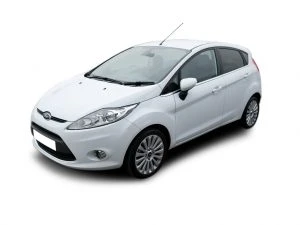
Ford Fiesta Econetic 2010
Back in 2010, the benchmark for fuel-misers belonged to the stylish Ford Fiesta Econetic. Nothing was able to beat the claimed 3.7 litres/100 km fuel economy figure that this car offered. It is a nicely designed car that looks good even today, and is also a great handling FWD Hatch.
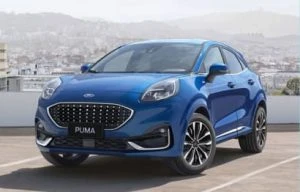
Ford Puma 2022
I’m not quite sure why, but Ford no longer sell us a new Fiesta Hatchback. However, you can buy a brand new Ford Fiesta-based Puma in 2022, which is a small SUV (Hatchback on steroids) that comes with a 92kW/170Nm 3-cylinder turbo petrol engine. Cabin space is claimed to be class-leading, and the boot expands from 456 litres to 1161 litres. You can also enjoy a fuel consumption figure of around 5.3 litres/100 km.
Honda
Honda’s ever reliable Civic is still a nice drive today. In 2010 Honda offered it in a Hybrid Sedan shape that employed a little 1.3 litre Hybrid Honda engine, delivering a combined economy of around 4.5 – 5.0 litres/100 km.
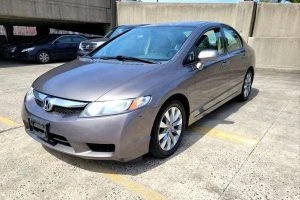
Honda Civic 2010
2022 sees the Civic come alive with a very classy exterior and a powerful 1.5-litre Turbo petrol engine with 131 kW of power and 240Nm of torque. Somewhere around 6.3 litres/100 km is attainable, and with a ride that is comfortable and athletic.
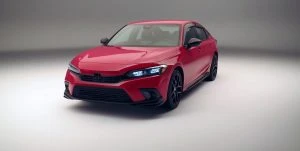
Honda Civic 2022
To find Honda’s current fuel miser, the brand new HR-V is an eco-friendly rewarding drive. Honda’s e:HEV technology in the HR-V utilises an intelligent 2-Motor i-MMD hybrid system that seamlessly switches between three modes to give you optimal performance, and a smoother, greener, and more fun driving experience. A claimed 4.3 litres/100 km for the e:HEV-L hybrid and 5.8 litres/100 km for the Vi X 1.6-litre petrol motor is on offer.
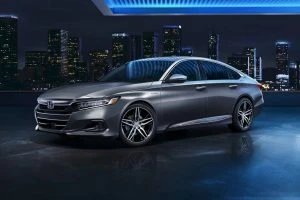
Honda Accord Hybrid Sedan 2022
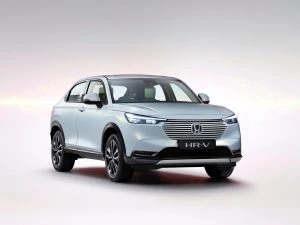
2022 Honda HR-V
All class, you can also get yourself into one of the best Hybrid Sedans you can buy: the 2022 Honda Accord Hybrid. It boasts a claimed 4.3 litres/100 km combined fuel economy – a very good figure for what is a sporty, comfortable family sedan, with striking looks and all the modern goodies.
Hyundai
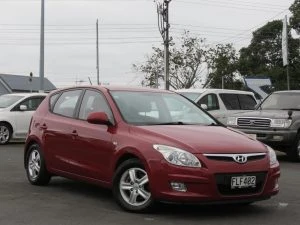
Hyundai i30 CRDI 2010
Back in 2010, Hyundai had come to the economy party with its 1.6 litre turbo-diesel Hyundai i30, known as the SX CRDi. Back then, it was Australia’s cheapest diesel car to buy new. The car was pleasant to look at, and it had a nicely finished interior and plenty of zip. With 255 Nm of torque, and a fuel economy figure of 4.7 litres/100 km, it’s still an economic little car to drive around in today.
2022 has seen Hyundai exploding with all sorts of new and exciting models that are economical, practical, and full of all the best safety and technology as standard! Hyundai’s 2022 i30 Sedan and Hatch can come with a 120kW/203Nm 2.0-litre aspirated petrol engine, a 150kW/265Nm 1.6-litre turbo-petrol and, in hot N variants, a storming 206kW/392Nm 2.0-litre petrol turbo. The 1.6-litre Turbo is the most frugal, offering around 6.8-7.0 litres/100 km combined.
But wait, there’s more! Hyundai’s 2022 IONIC and KONA models have skipped the Hybrid tech and gone straight to EV power.
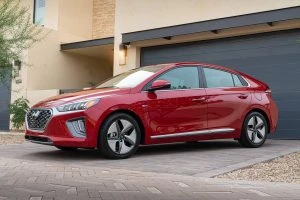
2022 Hyundai IONIQ
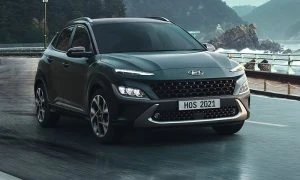
2022 Hyundai KONA
MINI
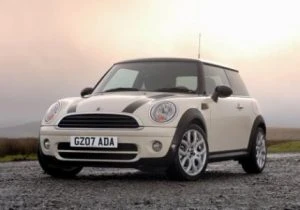
2010 Mini Cooper D
Mini, or BMW more correctly, offered the little Mini Cooper D in 2010 with a small 1.6 litre turbo-diesel engine, excellent fuel economy, and plenty of punch. As the frugal engine is linked to a six-speed manual gearbox, the claimed 3.9 litres/100 km was doable in a number of conditions.
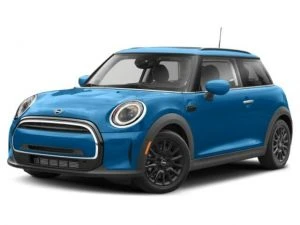
2022 Mini Cooper Classic
Fast forward to 2022, and a new Mini still has one of the catchiest hatchback designs you can buy, along with, perhaps, the best handling characteristics in a FWD small hatchback. They are definitely worth a look and loads of fun. You have many different models to choose from, however the base model Mini Cooper Classic is the most efficient now, with no diesel engine offered anymore. The 3-cylinder 1.5-litre Turbo petrol engine uses DOHC with VVT and VV-Lift technology, and can return a BMW claimed 4.9 (Highway), 6.9 (City), and 5.7 (combined) litres/100 km, respectively.
Peugeot
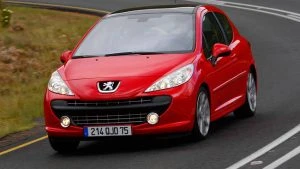
2010 Peugeot 207
Small French Pugs have always been a favourite hatchback of mine. For all their quirks, they are comfortable, practical, efficient, and generally classy all-round. In 2010, the little Peugeot 207 offered a fine economy package in the XT HDi, boasting just 4.8 litres/100 km combined.
2022 sees Peugeot offering us the 2008 GT with a ULP 1.2-litre Turbo 3-Cylinder motor capable of 114 kW, 240 Nm and a claimed economy figure of 6.1 litres/100 km. With this one, you get a very comfortable, practical little SUV with premium safety features.
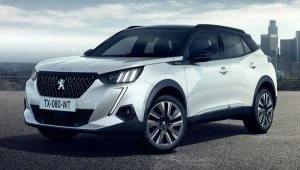
2022 Peugeot 2008 GT
Hybrids have taken off, and so the best and most impressive Peugeot of the lot is the new Peugeot 508 GT Plug-in Hybrid. The 508 range has stunning lines and is an exciting car. The 508 Sedan or 508 Wagon are roomy, very comfortable, and loaded with excellent technology and safety. You fork out around $77k for one of these new, however, it costs way less than a German equivalent. Peugeot reckon you can obtain 1.8 litres/100 km of ULP fuel use if your commute’s stars align. Regardless of whether you quite get down to this, this sort of hybrid travel is impressive in its own right!
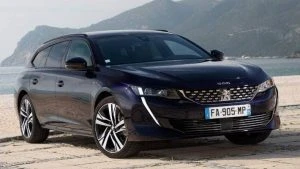
2022 Peugeot 508 GT Wagon
Fuel Miser Comparison (2010/2022) Audi-Fiat

One of the easiest ways to counter any rises in the fuel prices is to look at downsizing to a more economical car. If this sounds something you’d be into, then you certainly won’t be the first person to do so. We’ve just purchased a smaller Honda Jazz as a run around. Just think back to the fuel crisis in the seventies.
Anyway, it’s always an interesting topic, and who wouldn’t mind driving a new- to late-model car that spends less time at the gas pump. If you are a commuter, then you’ll appreciate owning a car that doesn’t cost the earth to run.
I thought I’d look at a list of cars that featured in an article written back in 2010, where I compared some of the thriftiest cars at that time. These were cars which had been designed to function as some of the world’s best fuel sippers. These vehicles were sold new in Australia, but I thought I’d add a new twist this time by adding what we can consider as the brand new version of these old models with their statistics for fuel consumption as a comparison – you know, a bit of nostalgia along with the new, and what’s changed – or not.
Note that the fuel consumption figures are based on the number of litres of fuel consumed every 100 km travelled. Often real world situations can play havoc with Lab tested fuel consumption figures, but this definitely gives you an interesting picture And, here is the list that is in alphabetical order – just to be helpful:
Audi
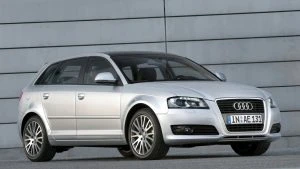
Audi A3 TDI 2010
The 2010 Audi A3 TDI offered a tidy package with practicality and comfort on its side. It uses the 1.9-litre TDI engine linked to a 5-speed manual gearbox that has plenty of useful torque and manages a fuel economy figure of around 4.5 litres/100 km. It was probably one of the roomiest economy cars on this list at the time.
Audi’s 2022 A3 is available in three model grades and two body styles ” Sportback (hatchback) and Sedan. Two powerplants are available for the stylish new A3. The most fuel efficient is the 35 TFSI 1.5-litre turbo-petrol with mild-hybrid technology producing 110kW/250Nm with a claimed 5 litres/100 km combined economy.

Audi A3 2022
Audi also has the smaller A1 model to add to your shopping list, which you can now buy new. It has a 1.0-litre 3-cylinder ULP engine with 85kW/200Nm and a 5.4 litres/100 km combined economy, or a 1.5-litre four-cylinder 110kW/250Nm option with a 5.8 litres/100 km combined economy.

Audi A1 2022
BMW
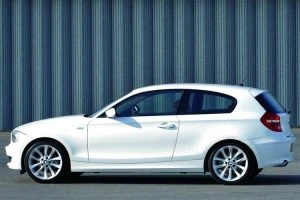
BMW 118d 2010
At the time, another small German car, the 2010 BMW 118d, offered a fun drive and used an automatic gearbox with a stop/start function for the engine. It also offers a slick 6-speed manual gearbox option and achieved an impressive 4.5 litres/100 km for its combined fuel economy. You have 300 Nm of torque, and it feels a punchy little powerhouse, and it’s also RWD!
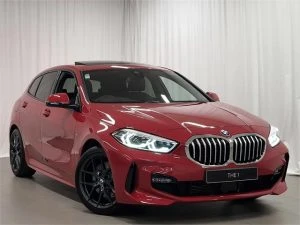
BMW 118i M Sport
In 2022, the 1-Series is available in a 118i M Sport version, which uses a 103kW/220Nm three-cylinder turbo ULP (unleaded petrol) motor with a claimed 5.9 litres/100km combined.
Citroen
The French loved to rival the Germans, and still do, so it was no surprise to see that the Citroen C3 and C4 featured in 2010. They are still nice-looking and comfortable cars. The Citroen C3 HDi offers the driver a tidy fuel consumption figure of 4.4 litres/100 km, while the bigger and roomier C4 HDi could deliver 4.5 litres/100 km in combined fuel economy runs.
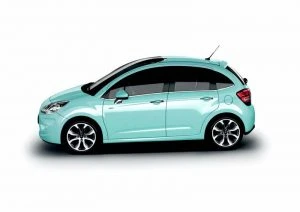
Citroen C3 2010
2022 sees Citroen’s C3 with much more grown-up styling, and a 1.2-litre three-cylinder 82kW/205NmTurbo petrol engine that delivers the power through a 6-speed automatic FWD driveline. Fuel consumption should see around 5.7–6.4 litres for a Worldwide Harmonised Light Vehicle Test Procedure (WLTP) combined cycle, which is the current testing process for measuring a new car’s fuel economy, electric driving range, and emissions.

Citroen C3 2022
Fiat
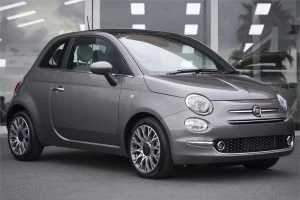
Fiat 500 2022
One of the 2010 super cuties, and still with endless loads of flair, is the nicely packaged turbo-diesel Fiat 500 that captures your attention. Whether it is the 1.3 JTD engine mated to a 5-speed or 6-speed manual gearbox, both options provided a thrifty 4.0–4.5 litres/100 km fuel consumption.
2022 Fiat 500 cars are still available new, of course with all their modern updates and new technology like Apple CarPlay and Android Auto, Bluetooth connectivity, and updated safety technology. The current 500 and 500 Convertible offer a manual or single-clutch automated manual five-speed gearbox that underpins the driving force behind the 1.2-litre 4-cylinder engine producing 51kW and 102Nm. Fiat rate it good for around 4.9 litres/100 km on a combined run, making this a great modern car to drive in an urban setting.
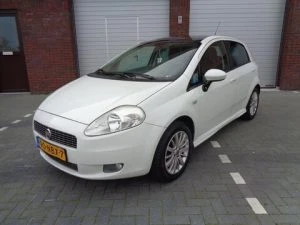
Fiat Punto 2010
In 2010, the Italian flamboyance continued with the Punto 1.3 and 1.4 JTD models. The Punto handles the road well, making it rewarding to drive, while returning a combined 4.6 litres/100 km. Currently, Fiat no longer sells a New Punto model, so, if you’re into Fiats, then the 500 is the one for you.
New Cars and Software Updates

How would you react if you had to pay for the apps that appear on the touchscreen of your new car? Various auto manufacturers are looking at new ways to charge owners money for features that were previously sold as an option for the car when you bought it new. One idea that has shown up in their brainstorming sessions was to charge car owners subscription fees for features like Apple CarPlay and its phone-pairing connectivity – as BMW is already doing. Of course, this has been a feature that has been included for free on many mainstream cars.
Perhaps not so surprising to many would be the results that Cox Automotive collected, which were collected from a survey that asked a relatively small group of a little over 200 people about their thoughts and attitudes towards having to pay over and over again for features that used to be included at the point of sale. Around 75% of the survey respondents would refuse to pay for features on an ongoing basis.
When asked about having to pay for any safety features on an ongoing basis, the survey showed that around 80% would not want to pay for these safety items again and again. However, if forced to, these same respondents would be prepared to pay up to $35 per month. I’m not sure whether the people surveyed were by enlarge high-flyers or a decent cross-section of society that included your average wage earner. This cost per month was the highest level that these respondents would be prepared to pay for them if they were forced to.
A full 92% of respondents said that the physical items like heated and cooled seats, massage functions, or a refrigerated drinks box should be purchased as a one-off-at-the-point-of-sale option, just like anyone does now when they buy a new car with extra options.
A new car these days is full of computerised technology, so any software updates or subscription fees for software enhancements, EV power upgrades, satellite or vehicle locator enhancements need to be paid for somewhere along the line. The funny thing is that, even as with a standard Office update on a desktop, the real-life software updates rarely have any significant practical benefits in real-life usage for the user. Sometimes a new desktop Office update can even complicate things with the user having to relearn the fifth new visual format and appearance update in two years – I know, I was probably exaggerating.
I guess I would be prepared to pay for a driving range enhancement or a better battery capacity after purchasing a new EV, though I guess this could be a bargaining carrot for keeping a customer longer and loyal to a brand, or even enticing them to buy a certain car in the first place.
Interestingly, around 50% of the survey respondents weren’t even aware that subscription fees for car features were a prerequisite. Rising costs that grow quicker than someone’s usable income is never a welcome scenario, so these sorts of surveys and results will hopefully provide auto manufacturers with the necessary feedback from their customers, and on the customers’ tolerance for any new additional fees in general.